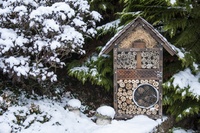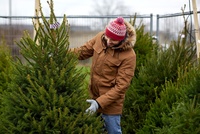
Britain is likely to have a ‘normal spring’ this year according to the National Trust following their annual Valentine’s Day flower count.
Garden teams from 34 gardens counted 2,287 plants in bloom during this year’s count, the 13th successive year the charity has recorded what is flowering in its gardens in mid-February. The figure is a third up on last year’s 1,737 flowering plants.
For the third year running, Saltram in Devon had the highest number of flowers recorded with 214 blooms. Knightshayes, also in Devon, was second, with 154 flowering plants.
Snowdrops have been particularly good this year because of the cold weather early on; at Kingston Lacy, in Dorset, the team estimates there have been more than five million snowdrops in flower this year.
The National Trust’s gardens adviser in the south, Ian Wright, said the long cool spell over winter followed by the early cold snap slowed down the progress of flowering this year.
“In recent years we’ve seen all sorts of flowers bursting in to bloom at this time of year but this year I’m glad to say it seems a bit more normal,” he said. “That’s not to say normal is dull, it’s anything but dull in our gardens with the flowers that have bloomed when they should providing a stunning backdrop to bright and cold frosty mornings.”
Among plants in flower during the very early part of spring are sweetly-scented Daphne and the Christmas box, Sarcococca confusa. Crocus and daffodils are opening in early spring too, along with snowdrops, winter hellebores and camellias.
Meanwhile in a separate survey by the National Trust, the daffodil was voted the most loved spring flower, beating the snowdrop off its top spot after it came out ahead in last year’s survey. The primrose was third.




